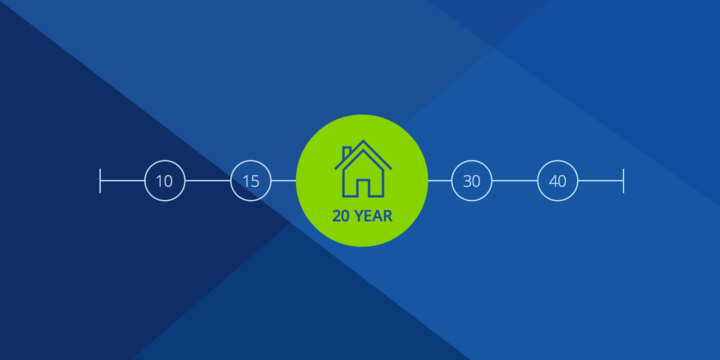How Does Mortgage Interest Work?


Written by Alycia Lucio on July 29, 2024
Mortgage interest is a percentage of your home loan balance that becomes part of your monthly payments. The higher your mortgage interest rate, the more you’ll pay each month in addition to your principal balance. As you continue to make payments over time, your principal balance will decrease as will the additional amount calculated based on your interest rate. Eventually, more of your money will go to the principal amount versus the interest until your loan is repaid.
What is mortgage interest?
Mortgage interest is the cost you pay to borrow money from a lender to buy a home. It’s a reflection of the lender’s risk based on current market conditions and the borrower’s financial standing. A lower credit score or higher debt-to-income ratio (DTI), for example, suggests a greater likelihood of a delinquency or a default on the loan.
Mortgage interest vs. principal
Your mortgage interest and principal are the two primary components of your home loan. Mortgage interest is what you pay the lender to borrow the money, while mortgage principal refers to the actual amount you’re borrowing. Interest is expressed as a percentage of your outstanding principal. As you pay down your principal, your interest payments gradually get smaller.
How is mortgage interest calculated?
Lenders calculate interest as a percentage based on your home loan, taking into consideration the following financial factors:
- The size of your down payment
- Your credit score
- Debt-to-income ratio (DTI)
- Current market rates
- Whether it’s a fixed-rate or adjustable-rate mortgage (ARM)
- Loan-to-value ratio (LTV)
Your lender will use an amortization schedule to show the portion of each monthly payment that goes toward your principal balance and interest over the life of your loan. More importantly, it shows how your interest will shift from high to low towards the end of the loan term.
Using our Amortization Calculator, you can visualize your repayment schedule by plugging in the financial factors that apply to your unique situation.
Here’s an example of how mortgage interest shifts on a 30-year fixed-mortgage loan of $200,000 with a 6.57% interest rate and estimated $1,273 monthly payment over the first six months:
| Month | Interest Payment | Principal Payment | Remaining Principal Balance |
| 1 | $1,905 | $178 | $199,822 |
| 2 | $1,094 | $179 | $199,642 |
| 3 | $1,093 | $180 | $199,462 |
| 4 | $1,092 | $181 | $199,281 |
| 5 | $1,091 | $182 | $199,098 |
| 6 | $1,091 | $183 | $198,915 |
By the end of the loan term, the interest payment on this mortgage will decrease to $7, and the principal payment will be $1,263.
What’s the difference between the annual percentage rate and interest on a mortgage?
A mortgage's annual percentage rate (APR) reflects the interest rate in addition to mortgage points, closing costs, origination fees, PMI, and other fees that a lender charges you to borrow money for the loan. In contrast, the interest rate on your mortgage represents the periodic cost of borrowing the principal loan amount. Both are expressed as a percentage and calculated into your monthly payments. Learn more about APR vs interest rate.
How interest impacts different mortgage types
Fixed-rate mortgages
With a fixed-rate mortgage, the interest rate remains the same over the life of the loan. Each monthly payment is calculated using the same interest rate, regardless of your outstanding principal balance.
Adjustable-rate mortgages (ARMs)
An ARM's interest rate fluctuates over time based on market conditions. Depending on the type of ARM, there’s an introductory period during which the interest rate remains the same for a certain number of years. Once the introductory period ends, the interest rates will change every six months, as will your monthly payment.
Interest-only mortgages
With interest-only mortgages, your monthly payments only go toward the interest for a certain period of time—usually five to seven years. After that, your monthly payments increase to include both the interest and principal amounts.
Jumbo loans
Jumbo loans exceed conforming loan limits, so you can expect to pay higher interest rates. Jumbo loans also come in fixed-rate and ARM options, which will also impact its interest rates and amortization schedule.
Reverse mortgages
With reverse mortgages, the interest is added to your loan balance each month. This causes the balance to increase over time rather than decrease.
What is considered a good mortgage rate?
In the 2024 mortgage market, a good mortgage rate ranges from 6% to 7%. However, the definition of a “good mortgage rate” changes over time as the market and interest rates fluctuate.
For instance, many buyers and refinancing homeowners locked in rates below 3% in 2020 and in 1980, rates topped 18%. In today’s market, a mortgage rate around 7% or 8% is more common.
How to get the best mortgage rate
Pay down your debts
Lenders also consider your debt-to-income ratio (DTI), which reflects how much you owe in various debts compared to your monthly earnings and how likely you are to repay your loan. A low DTI ratio demonstrates your ability to manage your debts and how likely you are to repay your home loan. Paying down your debts and achieving a DTI below 35% can help you qualify for better interest rates.
Work on your credit
Lenders use your credit score to determine how likely you are to repay your mortgage on time. The higher your credit score, the better your chance of securing a favorable interest rate. To Improve your credit, consistently pay your bills on time and pay down debts.
Save for a sizeable down payment
Lenders always recommend putting down 20% on your mortgage loan as a 20% down payment will unlock certain advantages, like no private mortgage insurance (PMI) on conventional loans. However, you can still qualify for a mortgage with a lower down payment if you have a good credit score, a favorable DTI ratio, and a stable income history.
Ultimately, your down payment amount will determine the type of loan and terms you qualify for. It will also lower your total loan amount, saving you money on interest over the life of your loan.
Shop around for lenders
Lenders all have different offerings based on a borrower’s qualifications. Shopping around for a lender allows you to compare their rates, terms, and loan options. It’s recommended to compare at least two to three lenders to obtain the best mortgage rates for your financial situation.
Consider mortgage points
A mortgage point can be bought from your lender to lower your mortgage interest rate at closing. One point equals 1% of the total loan amount and can reduce your interest rate by 0.25%.
Is mortgage interest tax deductible?
You can deduct mortgage interest during each tax year. If you are filing as single, you can only deduct mortgage interest on the first $750,000 of your loan. If you are married filing separately, you can deduct the first $375,000 of interest on your mortgage. This applies to both primary and secondary homes.
Not ready to get pre-approved, but curious how much you pre-qualify to borrow? You can check your pre-qualification with us anytime at Zillow Home Loans* in as little as five minutes.
*An equal housing lender. NMLS #10287
How much home can you afford?
At Zillow Home Loans, we can pre-qualify you in as little as 5 minutes, with no impact to your credit score.
Zillow Home Loans, NMLS # 10287. Equal Housing Lender
Get pre-qualifiedHow much home can you afford?
See what's in reach with low down payment options, no hidden fees and step-by-step guidance from us at
Zillow Home Loans.
Zillow Home Loans, NMLS # 10287. Equal Housing Lender
Calculate your BuyAbility℠



